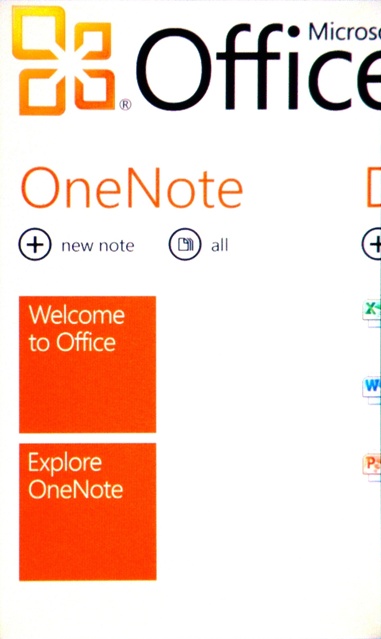Why you can trust TechRadar

Maps
When it comes to maps and satellite navigation, Nokia has been leading the pack for a while now. Disappointingly, the Nokia Lumia 800 has limited functionality in this area when compared with Nokia's Symbian offering.
The Nokia Lumia 800 comes with Bing Maps as standard, pre-installed alongside the limited-functionality Nokia Maps and Nokia Drive navigation apps.

Using the Drive app highlighted a number of limitations when compared with the latest version of Nokia Maps on Symbian Anna and Belle devices. The first of which is that it is not possible to set your home location.
Add to this that destination setting can only be achieved by text entry search, which however good it is - and it is very good - is still a major limitation compared to online favourites, selecting from a point on the map, selecting from categorised points of interest (POIs) and selecting a location from your contacts available on Symbian devices.
Accepting these limitations, the speed and accuracy of location is excellent, finding our location within a couple of seconds on every occasion. Once in navigation mode we also noticed the lack of voice files including the 'with streets' option, developed on Symbian, which use text-to-speech to include road names in the navigation guidance.

When we first used the Nokia Maps offering we were surprised to find that it doesn't use the on-device map data installed via Nokia Drive. This is, of course, one of the biggest selling points for Nokia smartphones, along with camera capabilities provided by Nokia's long-standing partnership with Carl Zeiss.
Why download hundreds of megabites of Map data for Nokia Drive and then ignore this, using over-the-air map data on Nokia Maps? It leaves us baffled.
Sign up for breaking news, reviews, opinion, top tech deals, and more.
Once we had accepted this limitation of Nokia Maps, we were further bewildered by the lack of integration between Nokia Maps and the operating system, and even with Nokia Drive.
Sadly, Nokia Maps is also limited to text entry searching for setting your destination. But what left us further exacerbated is that once the destination was found, there was no option to navigate using Nokia Drive. Instead we had to either use OTA turn by turn pedestrian or car navigation with no voice guidance, or close Nokia Maps and open Nokia Drive, re-entering and selecting our chosen destination.
Nokia Maps does provide Places, which are a form of POI overlayed on the Maps that can be accessed for information about them, Qype reviews, guide information and pointers to other places in their vicinity. These can be chosen as a destination, but there's no categorised menu, although the icons used are based on the simple food, entertainment, train/bus station categorisation principle.
All in all, Nokia's Drive and Maps are good at what they do, but feel too disconnected to be provided from the OEM for the device at present.
In addition to the Nokia Drive and Nokia Maps apps, there's a standard WP7 Maps app. Opening this app displays your current location using downloaded maps like Nokia Maps, rather than on-device data like Nokia Drive.
The bottom soft button bar provides access to Local Scout, Navigation (without voice), My Location and a search facility. Although the interface is crisp, the app doesn't stand up to the Nokia Drive offering. But it exceeds that currently offered by Nokia Maps due to its much better integration in the Windows Phone OS.
With a combination of the integrated Local Scout and Contacts integration provided in Bing Maps and the vehicular satellite navigation, albeit unintegrated, provided by Nokia Drive, Nokia Maps is somewhat redundant in its current form.
Apps
Although the re-installed apps list is somewhat limited, the quality of apps available via the Marketplace is impressive. When compared with other app stores, quantity is not everything as this often brings a drop off in quality.
That said, we'll run through the pre-installed apps in alphabetical order as displayed in the on device apps list.
First in the list is the Alarm app. Operation is simple, tapping on a plus symbol in the soft button bar at the base of the screen to add alarm providing time, repeat, sound and name entry fields and finally tapping on the floppy disk symbol in the soft button bar to save.
Tapping on the repeats entry field provides a Monday to Sunday multi select list with the only thing missing being a start and end date, but this is something that can be achieved in the calendar app instead.
Once an alarm is set the alarm slider toggle is displayed next to it to enable/disable it and a long press opens an edit screen where it can be deleted.
App Highlights is another Nokia WP7 only app which appears to be Nokia's suggestions from the Marketplace. In some ways this app doesn't need to exist alongside the standard Marketplace app although the shake based 'surprise me' functionality is fun.

Calculator is simple and easy to use with large buttons and an even larger display with standard operators and a single memory.
Calendar opens by default in day view, lateral scrollable agenda and to-do views. All entries are colour coded based on which cloud service they are saved on.

The cloud services available are based on those that you set-up in the email and accounts settings discussed earlier. Views have the same icons in the soft button bar, namely (from left to right): the date, new event/task and day/month toggle.
Creating a new entry appears no different to other phone calendars with Subject, Location, When How long, Reminder, Occurs, Status, Attendees, Notes and a private toggle.

Games is the link between WP7 and Xbox Live. Once the Windows Live account associated with your Xbox Live account has been added to your phone the app opens on the Collection screen installed games at the top and suggestion for trial and purchase below.
A quick swipe to the left displays your Xbox Live account credentials and avatar, with further swipes transitioning to friends and messages, game and turn requests, spotlight and back to your collection.

As mentioned at Nokia World some console and WP7 games are integrated to the degree that you can transfer your game between your console and phone by taking a snap of a Microsoft tag detailing your game progress, such as Kinectimals.

Help + How-to is another app which feels like it should be in settings rather than taking space on the apps list as it is on device help rather than a functional app.
Office provides access to mobile versions of OneNote, Word, Excel and PowerPoint capable of working with documents either on device or on Microsoft cloud-based services like SkyDrive, SharePoint and Office 365.
Although these apps have reduced functionality compared to the full PC variants they can do more than enough for mobile users. Things like formulae in Excel are supported with help and guidance during entry.
One thing we found interesting is that when you tap the plus symbol to create a new document the options are limited to Word and Excel, however you can open the pre-loaded OneNote and PowerPoint documents and save them as new documents.

The last app on the list is We Care, which is less of an app and more of a privacy statement from Nokia. Unless this is going to be used for more in the long run, it should be moved to an about screen in Settings or removed completely. Luckily a long press does give the option to uninstall.

If you decide you need more than comes pre-installed which will probably be the case a quick trip to the Marketplace app provides a one-stop shop for third party apps.
On opening the app you are presented with a list of the main categories, namely: applications, games and music which can be added to by your mobile provider.

When we were using an Orange SIM card we had an additional 'Orange Selects' entry at the top of the list showing what Orange thought we may need to better our experience.
From here you can either tap on a category or swipe left to lateral scroll through the three default category screens, or you can search from any of these screens to find what you want.
Sadly Orange is the only UK operator to fully embrace the Windows Phone environment, since using Vodafone, O2 and T-Mobile SIMs provided no similar 'Selects' menu item. None of these other networks supported pay via mobile bill within the Marketplace either.
